Overall Evaluation
Chief Judge
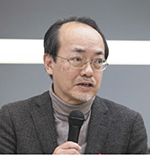 |
Takayuki KishiiPublic space was our theme this time. The question assigned to entrants was broad, “What kind of place will you address as public space?” and as a result, we received 355 submissions of wide range. There were works focusing on public facilities like roads, rivers, and parks, and there were works looking for public meaning in void spaces on building sites. There were also works looking at the public character possessed by architecture itself. First, I felt thankful that so many young people showed a strong interest in publicness, and I sincerely congratulate the 10 finalists who made it to the presentations. Unfortunately, however, very few proposals tried to grasp and understand this diverse spatial territory overall with a true awareness of people’s needs. I would like to see young people entrusted with the future try to escape from “architecture limited to the site.” This means to look beyond just the building, just the site, to the larger issue of public facilities and how they need to change, and to offer proposals on the relationships binding the city, site, building, and people responsible. “Designing the city and the building as integral,” in other words. It is our hope the competition this time will occasion such thinking. |
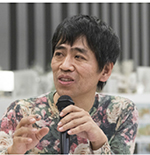 |
Ryue NishizawaThe theme of urban public space drew proposals for all kinds of public spaces. The submissions were all equal in merit, and choosing a First Place winner was not easy. Among them, however, I recommended “Small Street Corners Float into Appearance,” which endeavors to reedit urban Nagano. The submission offers many opinions, but the depth of the creators’ affection and consideration for the city is superb. The work most striking as an architectural design, on the other hand, was “Tomorrow,” which proposes a library for a favela in Caracas. Another work I felt praiseworthy was “Hill to remember the city,” which takes the theme of Osaka’s Taiko stone culverts. I also sympathized with the position behind “Whereabouts of old memories,” which takes perceptions of life and death as a theme in creating a public park area around a cemetery. While all the proposals took good perspectives and won my sympathy, they were narrow and limited in view, shall we say. I could not sense the strength and toughness that characterizes public space. I would like to see the courage and imagination to create something grand and large in scale. |
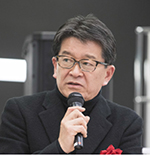 |
Shunsaku MiyagiMy premise as a judge, this time, was the importance of introducing locality in public space. In fact, this aspect was reflected in several of the 10 submissions advancing to the final screening, including the work which took First Place. Meanwhile, at the opposite extreme, there were submissions proposing universal approaches and programs, so the overall breadth and diversity of the thinking, this time, deserves attention. As it turns out, the meaning of “public” in urban space varies greatly depending on who is looking at that place, who the user is, and who is making a proposal for how it should be. This point is exceedingly obvious, of course, but amid such breadth and diversity of view, it reminded me how important it is for the designer to continually confirm his or her own standpoint. A vision for the next era can only be obtained within the conflict between universalness and locality in public space, which is to say, between the concept and the actual place. |
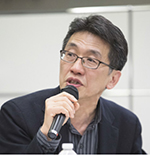 |
Shunya YoshimiAll of the 10 submissions passing the initial screening were full of fascinating ideas, so judging was hard. There was a distinct difference between submissions received from Japan and abroad. The Japanese submissions generally gave careful attention to environment and emphasized the use of revision and interceding spaces without changing the existing urban structure. In contrast, submissions received from abroad contained bold proposals concerning existing concepts. I felt again the “gentleness” of young people in Japan, who need to be more aggressive in designing the city. Naturally, they all seized on unique facets, and I sensed future possibilities in the connection they drew with the sound environment, nature, and the deceased, the embodiment they gave to historical memory, and the relationships they formed between railways and city districts. Ideas envisaging public space as places open to the past, nature, death, and murmuring sound are good, but I wanted the entrants to think a little deeper about how this might change the future direction of the city. If they could endeavor to connect public space with the deceased, fauna and flora, the past, and marginalized people in designs that deconstruct existing concepts, their submissions would have strong impact, I think. |
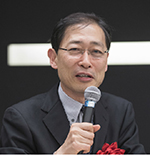 |
Tadao KameiThis competition, which arose from our discussions with Mr. Kishii, was for me personally an excellent opportunity to think anew about urban design. The four submissions taking the First and Second Places were all fresh in viewpoint and also extremely architectural, so one sensed great breadth and variance in scale in terms of their connection with systems and legislation. I had previously sensed the oddness of Nagano’s street pattern, but the First Place winner, “Small Street Corners Float into Appearance,” cleared up that puzzle for us. I felt drawn to its idea of basing future urban design on a triangular landform defined by the vestiges of old water courses. “The Ephemeral Line” is a realistic proposal for temporarily using to advantage an incomplete bus lane whose construction is on hold. Such situations occur often in cities, so I sensed that the plan could actually be applied. “Hill to remember the city” looks at “streets” and “avenues” in Osaka and applies a concept fresh in its view of public space—that of giving new relevance to back-alley spaces remaining from the ancient Taiko stone culvert sewerage system. “Phantom Surface” is a proposal that locates the infrastructure for urban activities on a grid, but its point looks beyond mere plaza infrastructure to infrastructure that can change the city itself. This competition, I hope, will stimulate people to thinking seamlessly about architecture and city. |


